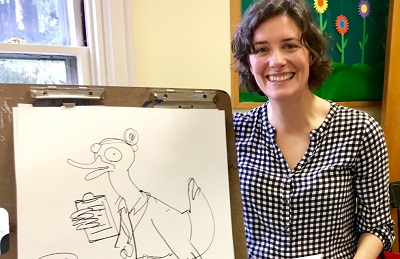November 6, 2020
by Tina Arnoldi
 In an earlier post for Theravive, I examined how cartoons and comics might be a useful way to educate people on mental health concerns. Recently, Vermont’s Center for Cartoon Studies released “Let’s Talk About It: A Graphic Guide To Mental Health”, a 24-page comic book geared toward middle and high school students. Cara Bean, a cartoonist and art educator who collaborated on this project, shared her experience.
In an earlier post for Theravive, I examined how cartoons and comics might be a useful way to educate people on mental health concerns. Recently, Vermont’s Center for Cartoon Studies released “Let’s Talk About It: A Graphic Guide To Mental Health”, a 24-page comic book geared toward middle and high school students. Cara Bean, a cartoonist and art educator who collaborated on this project, shared her experience.
When I asked her “Why comics?”, Bean rightfully asked “Why writing? Why sculpture? Why flash mobs?”. Bean feels we should acknowledge comics as a form of expression on par with any other form available to humankind. What she especially loves about comics is how it "enables the artist to break down complex ideas into digestible pieces and to use visual metaphors as a way to discuss difficult problems and situations.”
As she considered the characters for the story, she first thought about the issues she wanted to discuss such as anxiety, depression, and suicide and then imagined the types of characters who would have to face them. Bean explains, “Using rabbits instead of human characters was a gentle way to make their stories more universal instead of grounded in a specific culture.” She recognizes these are sensitive issues, and wanted to handle them appropriately.
Mental health is complicated and critics may say comics oversimplify a complex issue. Without minimizing the difficulty of diagnosing and treating mental illness, Bean says “Comics are a tool. They are as complex or as simple as their creators want. For example, Nick Drnaso's graphic novel Sabrina, nominated for the Man Booker Prize, brilliantly portrays a character with mental health issues.” She stresses that the book is “not a one-and-done solution. It should serve as a jumping off point for serious mental health discussions.”
The beauty of a medium that breaks down complex topics and uses images to support the content, is that it provides a method to reach kids with a book that is not intimidating. Bean's intent was also to provide vocabulary to allow them to talk about issues affecting their lives.
Although Bean is not a mental health professional, I asked her opinion on whether this is something therapists might share with their young clients. While she understandably did not want to give a direct recommendation, she said “The Stark County Mental Health & Addiction Recovery Board's System of Care Mental Health Awareness Campaign commissioned the comic and mental health professionals reviewed it and provided feedback to make it stronger and accurate. To my knowledge, the organization's intention is to distribute it throughout their county in central Ohio. “
Since comics and cartoons are an appealing medium for all ages, I asked if there were plans for a similar guide for adults. Bean doesn't have future plans at the moment but shared Snake Pit, her self published work that addresses some of the same mental health topics affecting adolescents but with an adult audience in mind. “People from around the world have read it,” said Bean, “leading me to believe that widespread interest is there. I am also working on a longer form graphic work about mental health, also for a young audience. In it, I'm taking a deep dive into some of the same issues.”
The comic is available for free on The Center for Cartoon Studies website. Since It is a new release, Bean is waiting to see the contexts where it is used. Her hope is that it will serve as a helpful communication tool for mental health conversations.
Tina Arnoldi, MA is a marketing consultant and freelance writer in Charleston SC. Learn more about her and connect at TinaArnoldi.com